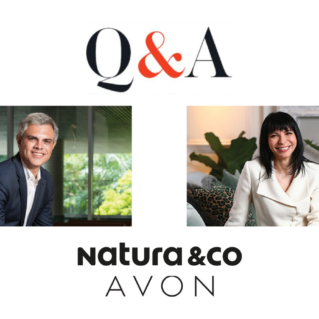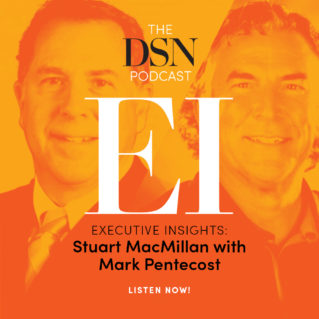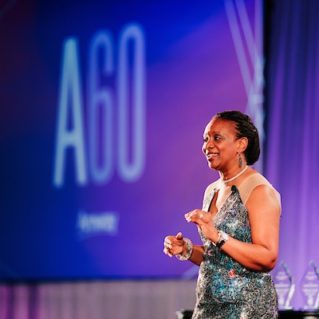THE WORLD IS CHANGING AT A FASTER PACE THAN AT ANY TIME IN HISTORY. The need for any leader, company, or industry to seek relevancy and leadership in the marketplace has never been greater. The direct selling industry is no exception to this reality. The competition for consumers requires us to be reimagine how we will continue to be a proven and meaningful distribution channel. I recently had the opportunity to speak with Gordon Hester on his insightful new book.
You have a new book called Positioned Right: The Forces Shaping the Future of Direct Selling and Network Marketing. Share with us what the book is about and why you wrote it?
Two and a half years ago, and seven full rewrites later, it came about because I started recognizing what I believe was an inflection point in our channel. You can only ride the wave for so long because, at some point, you realize that change is necessary and required. In my opinion, we are positioned right as a distribution channel and an opportunity for the future. It’s hard to argue you’re not when you’re in over 170 countries, over 120 million entrepreneurs using this business model, and doing over $200 billion in sales globally.

The whole first part of the book was letting people understand what both direct selling and what network marketing are all about. I’m an educator by nature, and I believe it’s important for people to be educated about who we are all about. The rest of the book is really focused on the evolution—the big areas we have to focus on. What are they?
- It starts with perception. How do we get the marketplace to have more raving brand ambassadors for the industry?
- Next, is focusing on improving the customer and distributor experience and journey.
- The last piece is culture—which I think culture is the ultimate differentiator in our business.
How do we as a channel adapt to this changing world?
We look at our channel in two components, one being the distribution channel, and the other being the opportunity. There’s obviously a lot of talk about the regulatory environment and what’s going on there. I noticed that the inflection point was the marketplace had evolved to a point where we had to change. If you went back ten years ago, there was no Amazon that was doing what they’re doing today, and the e-commerce component, that distribution channel wasn’t what it was today. So how consumers behave, how they shop, the tools they are given have all changed. I feel that as an industry we have fallen behind, and as a distribution channel we can do a better job.
To me, the best indicator of this is just go look at the number of customers we lose and how quickly we lose them. This is important to fix. We always have to be competing for customers because it’s the foundation of direct selling. I always tell people—no customer base, no business. That’s just reality number one of business.
We have to understand that our business isn’t about marketing hope, the next generation of the process is we have to be able to execute on
fulfilling that hope.
On the opportunity side of things, in 2017 and 2018 in the U.S. the industry lost over 2 million people. Part of that was segmentation and other issues. But you also have to look at ‘who’ we were losing in the industry. It is our part-timers, the micro-entrepreneurs, the lifeblood of our channel. With any established company, these are the people who are going to bring in over 90 percent of your sales, 90 percent of your customer acquisition and 90 percent of your recruiting.
So, when the things that are foundational stop working, you have to take a hard look at how do you go and get positioned to evolve this industry. And the book for me was step one. I think our industry right now is paying a lot of attention to the importance of evolving, and that’s a good thing. Now the question is how.
“Either the pursuit of relevancy and leadership in the marketplace will define the future of direct selling, or inaction will create limitations—not focusing all energy on fighting the old, but on building the new.” Tell us what this quote from your book means.
You can get caught up in the turbulence of the present and fail to invest your energy in the creating of the future. I think a lot of people in our channel know we have to evolve, but there are different levels of commitment for different companies. But ultimately, what matters about that commitment is how committed you are to it. Everyone says we need to change. They just want to take any risks to get there, so they just dip their toes in the water. I think our industry honestly is very intuitive based, meaning they’re going to rely on past experiences. As soon as a big obstacle comes, they tend to want to pivot backward.
I remember Tony Robbins saying there is that moment in time where you decide you’re never going back. It’s that resolve. There’s always going to be headwinds. This is a reality in evolving businesses and cultures.
You share what you call the Historical Path versus the Next Generation path. Please explain the difference and why we need to choose the Next Generation path.
If you go back to the beginning, direct selling began when a preacher by the name of Graves began selling books door to door. The industry took a big turn in the mid-40s when all of a sudden, these people were allowed to hire other people to help sell their inventory on a quota-based system. It was this process of if I’m successful in bringing customers, then at some point when I get enough customers, I can come become a distributor, too. That was the beginning of network marketing.
Another big change happened in the 70s. Companies would present big checks on stage, and there was a lot of emphasis around money. That’s when we had the birth of the opportunity centric model where the opportunity drove the business and when the compensation plans started shifting differently.
At the core of this is ‘Hope Marketing,’ it’s the kind of marketing that is about getting people excited about the transformation of their lifestyle. It is about being more comfortable, having more freedom and making more impact. These are the kind of examples of what you market hope around, but ultimately, successful businesses are those that turn hope into reality. And what our industry is really big on is marketing hope. The path forward is to climb the marketing plan. The more people that climb it. The more successful it is.
If you look at it in practice, what gets lost is the execution necessary to turn hope into reality. We have to understand that our business isn’t about marketing hope. The next generation of the process is that we have to be able to execute on fulfilling that hope. We need to get into the execution, engagement and relationship building game. This needs to define us, and we need to do better in all of these areas.
The Historical Path of marketing hope, chasing the career path worked well for many decades because recruiting solved all problems, and now it doesn’t. We are starting to see the evolution away from that. So, when I talk about ‘Next Generation,’ it’s talking about getting back to the concept of the customer experience and customer journey. It works off of a principle I call, Relationship Stacking, where the foundation of our business is customers. No customers mean—no business. Then there are these micro-entrepreneurs. 80 percent of these individuals will never build a team, so they have to be able to succeed through retailing product, in particular, to end consumers. If you can do that effectively, what you can do is establish strong leadership.
Next Generation is built around that thinking of customer growth. To do that, we’ve got to take care of our part-time micro-entrepreneurs and make sure that we can addict them to this business model and make sure that they’re successful.
To me, Next Generation, is much bigger than just this pendulum between opportunity and product. I think the future will be more of a cultural centric model where a company’s culture is so strong that people won’t leave it because their identity is tied to it. If we do this well, the decade-long debate of do we lead with the opportunity or product goes away because we have built a culture around a larger mission that everyone can wrap their arms around.


